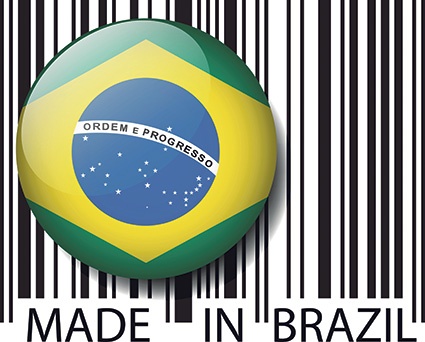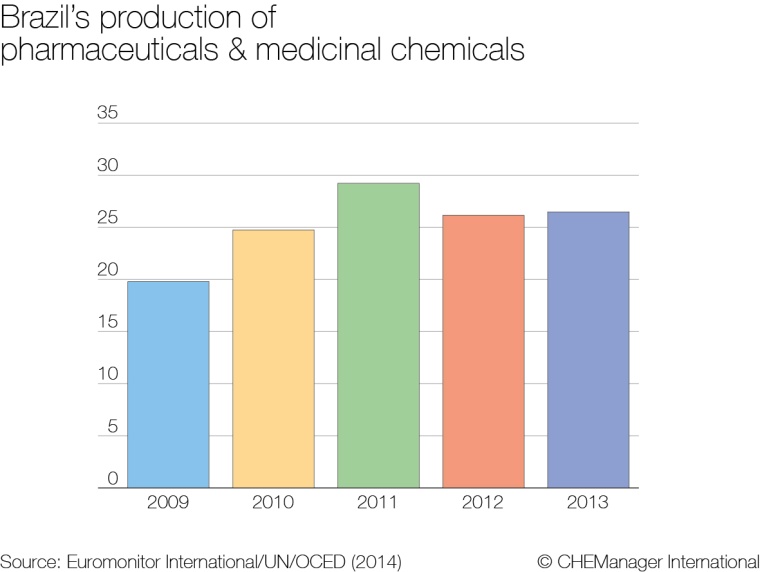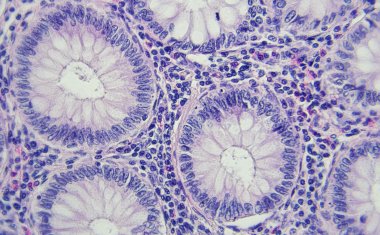Giving Pharma a Boost




Giving Pharma a Boost - Brazil's business environment is notoriously cumbersome. The manufacturing sector in particular suffers from high tax rates, poor infrastructure and increasing foreign competition. However, a more in-depth look at this sector reveals several opportunities, particularly for pharma manufacturing. And although new entrants to the market can be initially drawn to the bustling areas around São Paulo and Rio de Janeiro, other regions are now raising the interest of pharma manufacturers.
While Brazil's lackluster manufacturing sector is one of the reasons behind the country's sluggish economic growth in 2013, pharma manufacturing actually stands out thanks to relatively high production standards and capacity. Despite these advantages, Brazil's pharma market remains largely reliant on imports, leading to a trade deficit of nearly $6 billion in 2013. Brazil's biotechnology sector is also highly dependent on imported raw material, with 86% of local biotechnology companies having to import both reagents and equipment. In 2013, pharma production reached $27 billion (chart), 39% of which is concentrated in the state of São Paulo (Southeast), notably in the metropolitan areas of São Paulo and Campinas. In parallel, the neighboring state of Rio de Janeiro accounts for 12% of total pharma production and the South for 18%. However, this heavy production concentration in the South and Southeast does not necessarily reflect drug consumption patterns among the population: in fact, more than 65% of pharma consumption takes place in other regions of Brazil. Companies are increasingly finding important economic advantages to locate their manufacturing plants outside major states, as competition for land, infrastructure and human capital has become fierce, especially in and around São Paulo.
The government's current goal is to reduce the country's pharma trade deficit and enhance the domestic drug manufacturing base. Brazil's pharma industry is being shaped by two governmental initiatives: the Growth Acceleration Program which focuses, in part, on modernizing public infrastructure, and the Greater Brazil Plan which encourages the local production of high-cost drugs and promotes public-private partnerships in the form of technology transfer to public pharma laboratories. One particular incentive provided by the Greater Brazil Plan to pharma companies is the reduction of the corporate payroll tax for social security contributions from 20% to 1-2% of a company's operating revenue. The Plan is also aimed at increasing the local presence of international pharma companies, while, at the same time, encouraging investments in the production of Active Pharmaceutical Ingredients (API) and biotechnology drugs. The Plan is also aimed at ensuring Good Manufacturing Practice (GMP) compliance among small and medium-sized pharma companies, a step that is likely to increase both their market share and export potential.
The Center & Southeast: Staying Close to the Action
The presence of a large pharmaceutical pole in the city of Anápolis in the state of Goiás (Center) has encouraged the shifting of production out of the Southeast region. About one-third of Brazil's drug production by volume takes place in the Anápolis pharmaceutical pole, which is home to more than 20 pharma companies mainly focusing on generic drug production. The strategic location of Goiás facilitates the distribution of products to the São Paulo and Rio de Janeiro areas, and the Anápolis pole itself is expected to become Brazil's largest center for generic drug manufacturing. Goiás offers reduced manufacturing costs for companies by financing up to 73% of Brazil's much-debated Tax on Circulation of Goods and Services (ICMS). Currently, the largest generic drug manufacturer in Anápolis is Brazilian company Teuto, of which Pfizer has 40% ownership. Teuto's facility is the largest factory of injectable drugs in Brazil, with a production of 18 million units per month. In 2013, Brazilian giant Hypermarcas inaugurated its Brainfarma industrial complex in Anápolis, which will specialize in generic and biosimilar drug production, and will produce about 40 million drug units per month.
To the west of Goiás is the state of Minas Gerais (Southeast) which houses the Belo Horizonte Technological Park (BH-TEC), one of the largest biotechnology parks in South America. While initially catering to small biotechnology companies, the park is now increasingly attracting larger companies thanks to tax incentives and extensive university-industry partnerships. Local biotechnology company Biomm is investing $139 million in BH-TEC, in what will be Brazil's first insulin and therapeutic protein manufacturing plant. Cluster activities are also emerging in other cities of Minas Gerais, notably Uberlândia, Uberaba (both in Western Minas Gerais), and Montes Claros (Northern Minas Gerais), the latter being home to Danish Novo Nordisk's insulin production plant. Additionally, the city of Pouso Alegre (Southern Minas Gerais) is now witnessing significant growth in its pharma industry due, in part, to its geographic proximity to both São Paulo and Rio de Janeiro. In 2013, local company União Química invested $4 million in the production of biotechnology drugs while its counterpart, Grupo Cimed, is looking to increase its production capacity at Pouso Alegre by 40% in 2014. Indian ACG Worldwide, a major global manufacturer of solid drug capsules, is also establishing a plant in Pouso Alegre for the production of gelatin capsules, barrier films, and packaging equipment. This step is expected to greatly benefit the pharma industry in Minas Gerais, as the state will be able to rely on an internal supplier of raw material.
The Northeast: Embracing the Biotechnology Wave
Other previously neglected regions of the country are now increasingly attracting pharma companies. The Northeast, which currently represents only 10% of pharma production, is expected to become Brazil's new biotechnology hub, as several companies are establishing a presence there. The city of Eusébio in the state of Ceará has recently inaugurated its 50-hectare Ceará Industrial and Technological Health Pole (PITS) which promotes innovative drug production as well as collaboration between universities and the private sector. Companies settling in PITS receive special incentives such as a rebate of up to 99% of the ICMS tax. PITS will host the Institute of Technology in Immunobiology (Bio-Manguinhos/Fiocruz), the first vaccine production plant of the public foundation Fiocruz to be located outside the state of Rio de Janeiro.
The city of Goiana located in the state of Pernambuco in the Northeast is also home to an extensive 345-hectare pharmaco-chemical pole for biotechnology. Companies establishing a presence in the pole are also benefiting from its proximity to Recife, the fifth most populous metropolitan area in Brazil. The pole currently has six manufacturing plants which are under construction, notably Swiss Novartis' $300 million meningitis vaccine production plant. In parallel, Brazilian LAFEPE, a public laboratory owned by Pernambuco, will be producing antiretrovirals, while local company Riff Laboratório Farmacêutico will be producing blood serum. Hemobrás, a new federal-owned laboratory, is investing $284 million for its hemotherapeutic drug manufacturing plant and is partnering with the national French Laboratory for Fractionation and Biotechnology for technology transfer.
Manaus: the Amazon Unlocks its Potential
The largest city in the Northwest, Manaus (in the state of Amazonas), is in turn encouraging the settlement of pharma companies in its Free Trade Zone (FTZ). The Manaus FTZ, which is already home to several industries, is particularly attractive due to an 88% reduction on import tax for raw material, a 75% reduction on federal income tax, and reductions of 55% to 100% in state value-added tax, among other incentives. Leading Brazilian company EMS Pharma is establishing a manufacturing plant in Manaus for its subsidiary Novamed, which will focus on the production of solid drugs. EMS Pharma, which will invest $162 million and employ about 400 people, is the very first pharma company to settle in the Manaus Industrial Pole of the FTZ, and several other pharma companies are expected to follow suit in the near future. EMS Pharma's move was driven by the government's approval in 2012 of the Basic Productive Process for solid drugs, which is the minimum set of operations needed for the industrialization of a product in the Manaus FTZ in order to qualify for tax incentives. EMS Pharma has also sealed a research and development partnership with the Amazonian Biotechnology Center of the FTZ, which conducts research on profitable biotechnology drugs using resources of the Amazon rainforest.
While still hampered by bureaucracy and relatively high tax rates, Brazil's pharma manufacturing sector is being significantly transformed thanks to governmental initiatives and increasing public and private investments. These activities, which are starting to reshape the local pharma manufacturing map, will likely boost Brazil's drug industry even further and consolidate the country's position as a regional and global leader.





